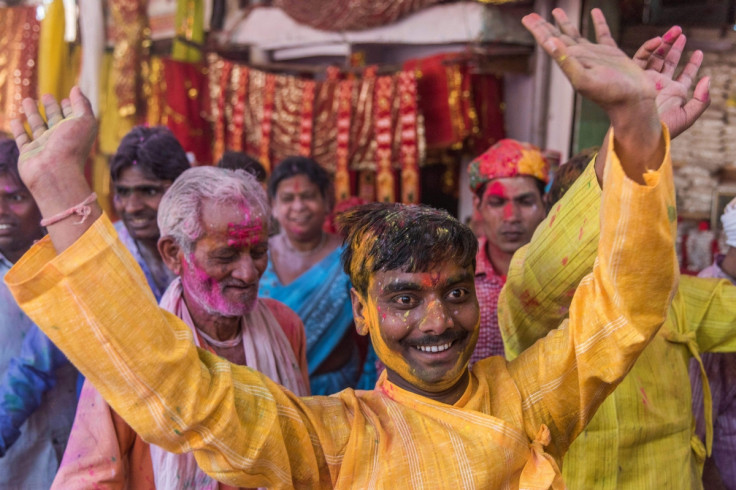Holi 2016: What is the Hindu 'festival of colours' and how is it celebrated in India?

Holi is one of India's most popular festivals, signifying the beginning of spring. Although the festival has its roots in Hindusim, the festival is now widely celebrated by people of all faiths across India, as well as by Indians across the globe.
While some people hold religious ceremonies during Holi, most people celebrate the festival with dancing, singing and the throwing of powder, paint and water. During the day, people take to the streets across India to indulge in a giant coloured water fight, which tends to last until sunset.
Although it is easy to mistake the festival for just a day of merrymaking and water fights, Holi has a number of cultural and religious associations. IBTimes UK rounds up everything you need to know about the Indian "festival of colours".
What is Holi?
Holi is the festival of spring and harvest, celebrating the new life of the season. Despite having religious roots, not much religious activity takes place on the day.
Holi derived its nickname of the "festival of colours" from the coloured water fight that takes place on the streets on the day. People smear each other with paint and throw coloured powder around, with everyone being allowed to participate, breaking down barriers of caste, age, sex and status.
Bonfires are often lit in the evening and people gather around to roast grains, popcorn, coconuts and chickpeas. The bonfires originate from the religious story attached to the festival of Holi.
What is the religious story of Prahlad and Holika?
Holi celebrates the legend of Holika and Prahlad, with their story signifying the victory of good over evil. The story says that Prahlad was a prince, whose father, the king, wanted everyone in his kingdom to worship him.
When Prahlad refused to follow these orders, choosing to worship Lord Vishnu instead, the king attempted to murder his son. However, despite numerous attempts, Prahlad could not be killed and survived being thrown off a cliff, trampled by elephants, bitten by snakes and attacked by soldiers.
Eventually, the king asked his sister, Holika, to kill his son. Holika had been given powers that made her immune to fire, so she decided to sit in the middle of a fire with her nephew in her lap, expecting that he would be burnt while she remained unharmed.
However, because Holika was using her powers to conduct an act of evil, she was burnt to death. Meanwhile, Prahlad prayed to Lord Vishnu to keep him safe in the fire and due to Vishnu's willing he survived the fire with nary a scratch on him.
The moral of the story reminds people that good always prevails over evil. To celebrate the story, the bonfires are lit on Holi and an effigy of Holika is burned.
What does Lord Krishna have to do with Holi?
While the story of Prahlad and Holika is the most popular one told in connection with the festival of Holi, another story also has connotations with the day. Holi is also a celebration of Lord Krishna, known to be one of the most mischievous of gods.
Legend states that Krishna, due to his playful nature, would throw coloured water on the gopis (milkmaids). The pranks eventually developed into the games of Holi, which explains why the festival is fun-filled rather than purely based on traditional religious customs.
© Copyright IBTimes 2025. All rights reserved.






















